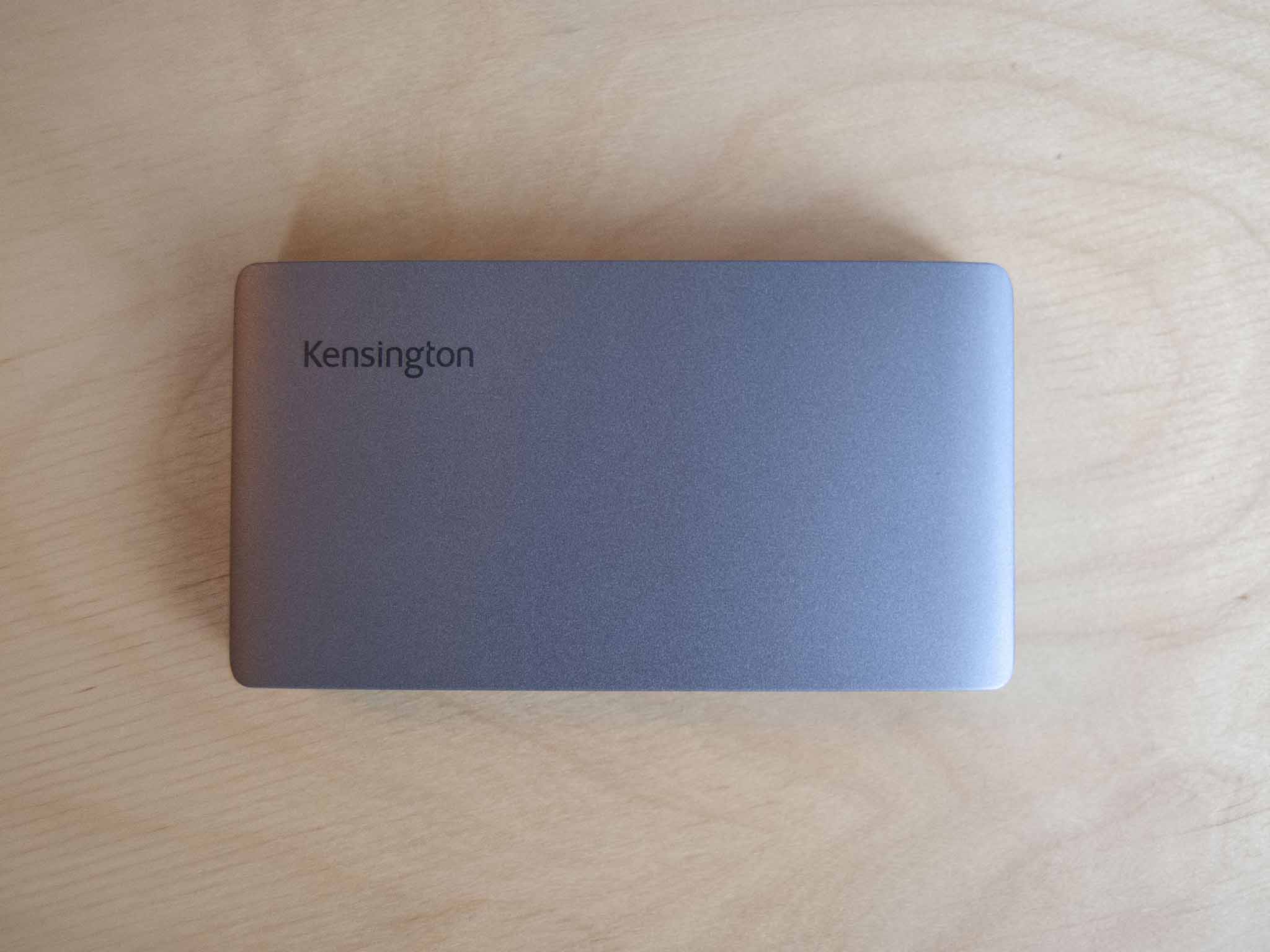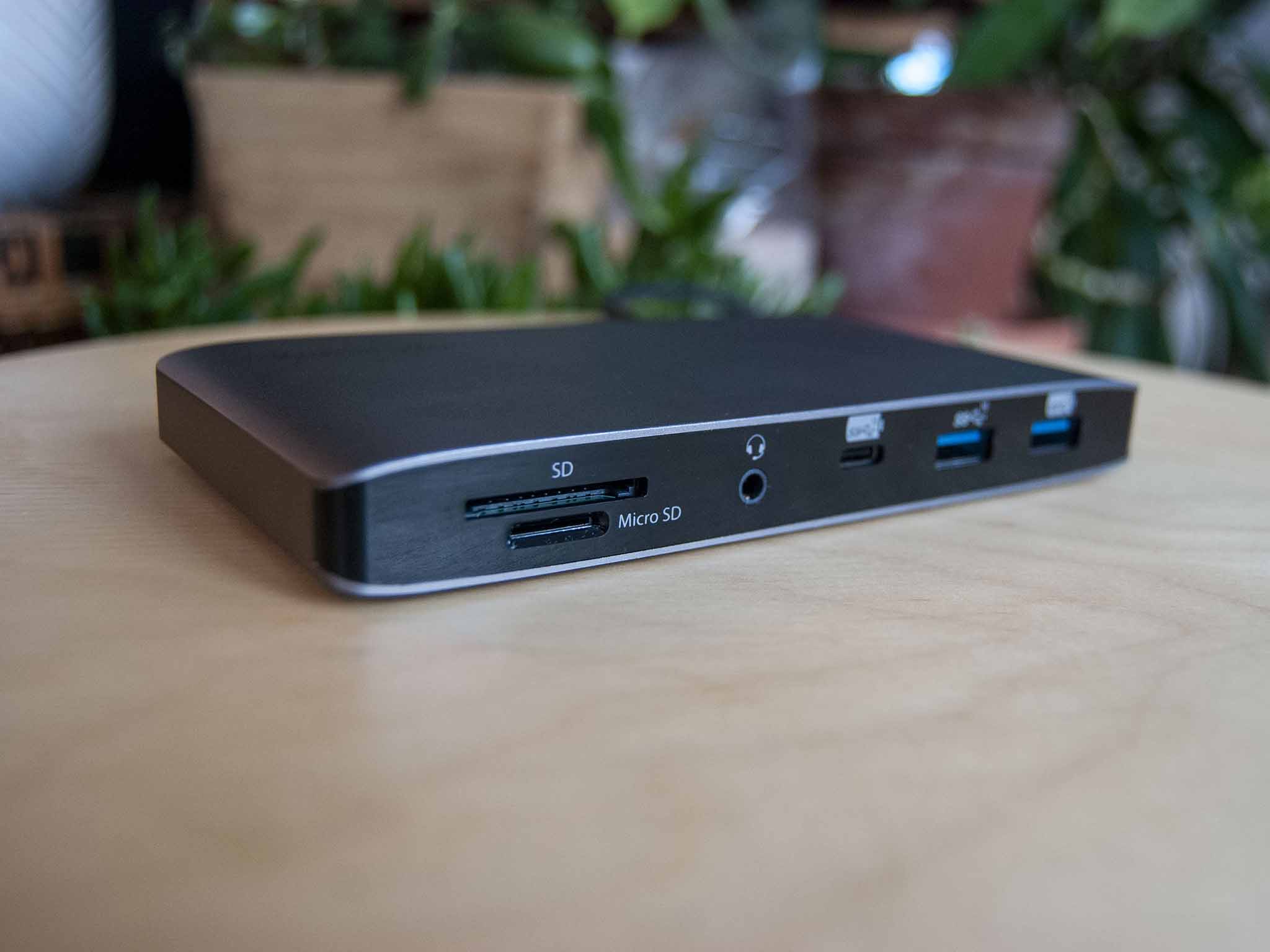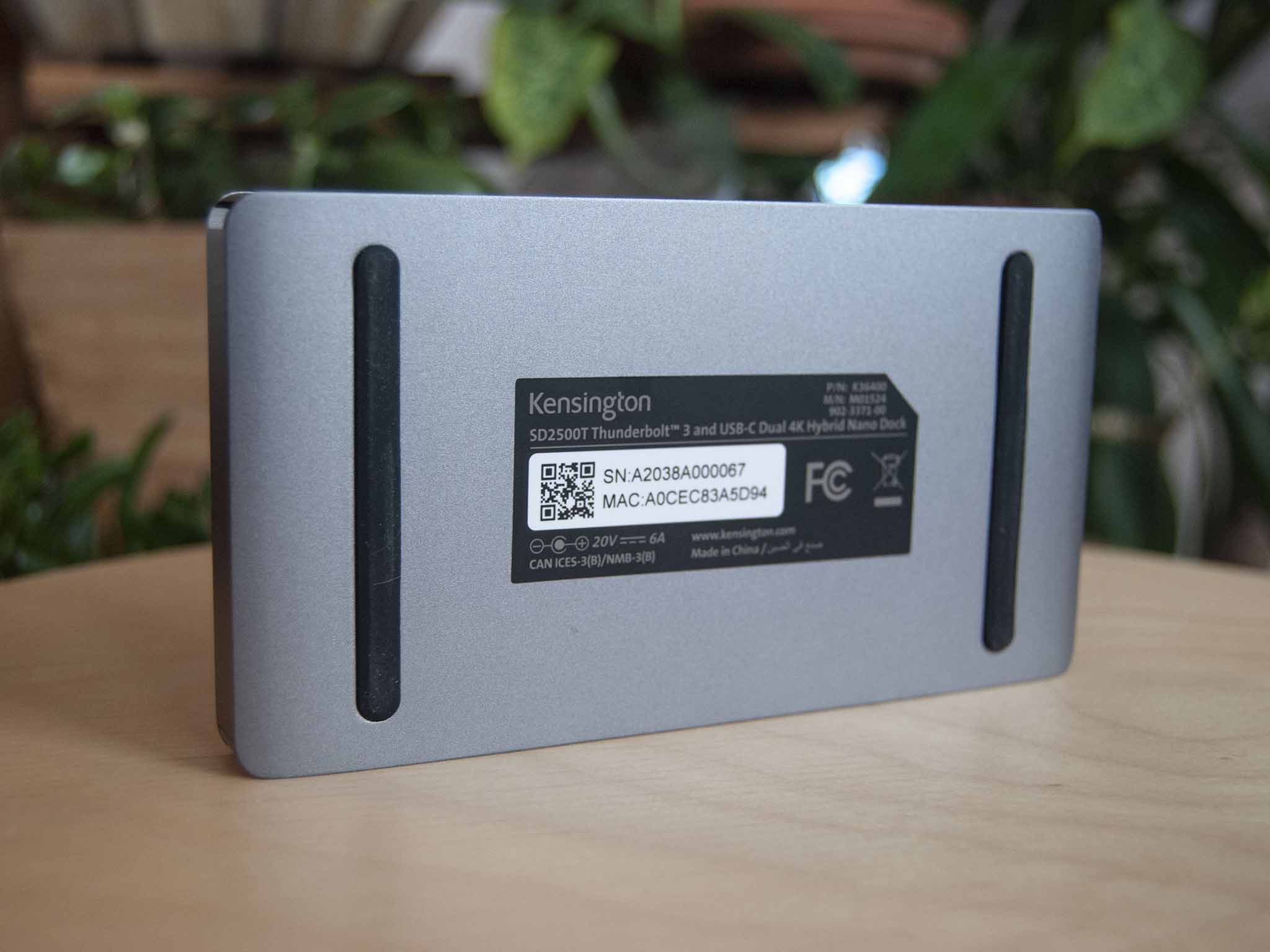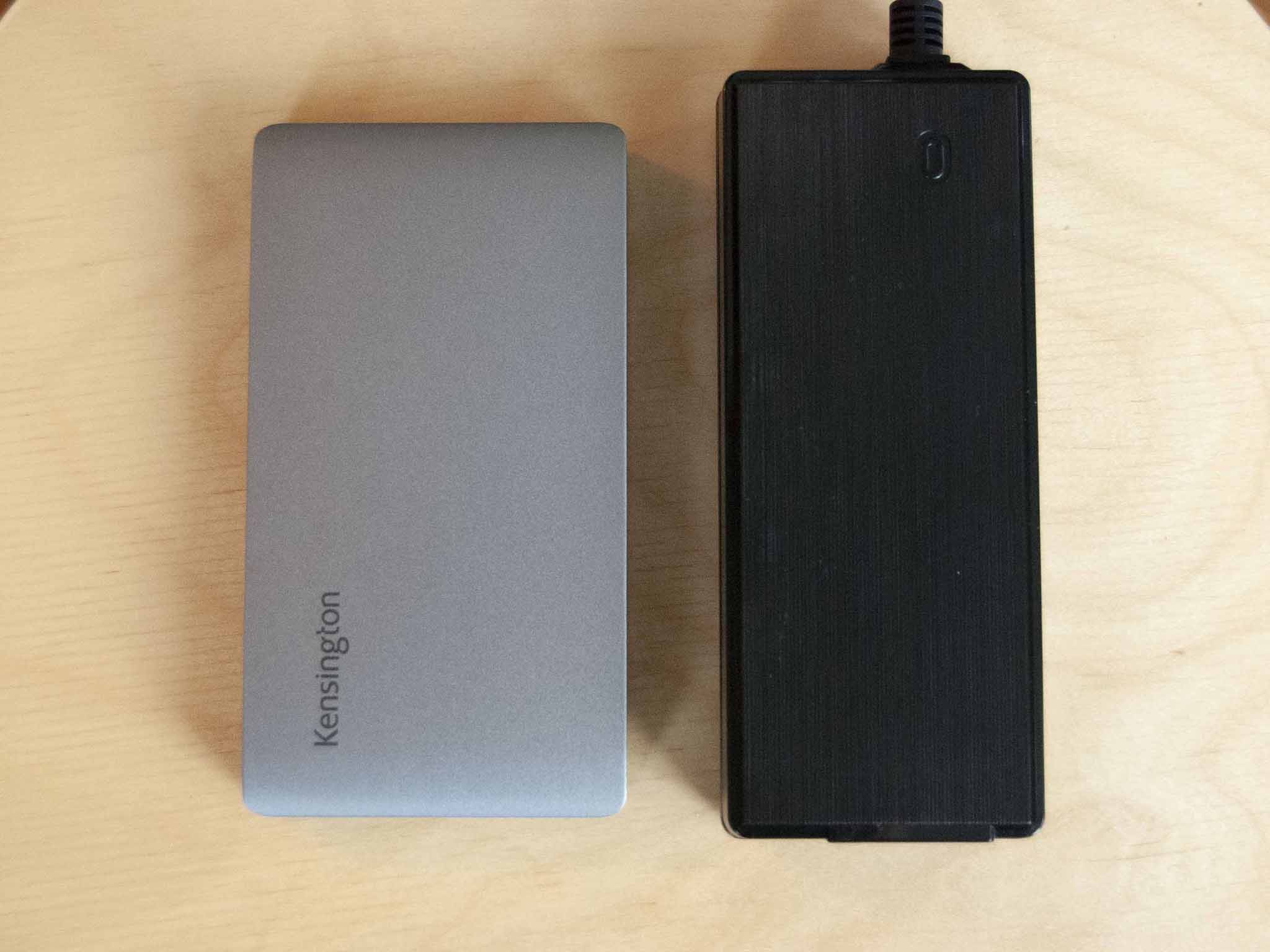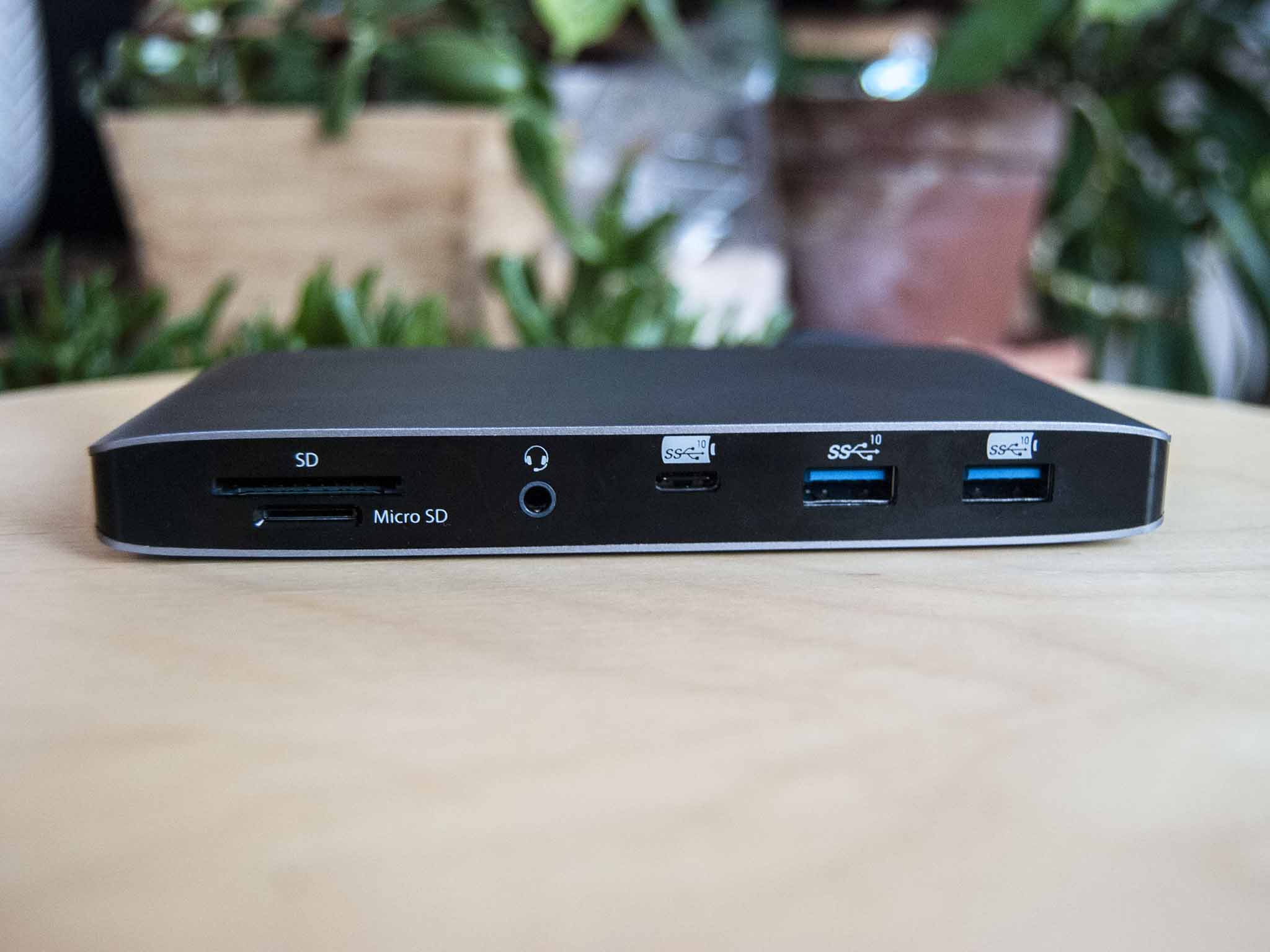

Kensington's new SD2500T Nano docking station is now available to buy, and we've been using it for the last couple of weeks to see what it's all about. It brings a lot of ports and decent charging capabilities, but the "Nano" part of the name is no joke. If you dislike some of the bulky top options on the market — check out our best laptop docking station picks — this should no doubt pique your interest.

Bottom line: The Kensington SD2500T is a well-built little docking station that works with Thunderbolt 3 and USB-C laptops. As long as you don't need more USB-A ports, downstream Thunderbolt 3, and native HDMI, it's a high-performance option if your desk is perpetually cramped.
Pros
- 10 total ports
- Well-built and compact design
- USB-C and Thunderbolt 3 compatibility
- Three-year warranty
- Dual 4K@60Hz display support
Cons
- No HDMI
- Only three USB-A
- No downstream Thunderbolt 3
What I love about the Kensington SD2500T
| Category | Spec |
|---|---|
| Connection type | Thunderbolt 3 (40Gbps) USB-C Gen 2 (10Gbps) USB-C Gen 1 (5Gbps) |
| Front ports | microSD/SD card reader (UHS-II) 3.5mm audio USB-C 3.2 (Gen 2) Two USB-A 3.2 (Gen 2) |
| Rear ports | USB-C/Thunderbolt 3 (Host) Two DisplayPort 1.4 Gigabit Ethernet USB-A 3.2 (Gen 1) |
| Max display res. | Thunderbolt 3: 8K@30Hz Dual 4K@60Hz USB-C: 4K@60Hz Dual 4K@30Hz |
| Power delivery | Up to 60W |
| Dimensions | 5.8 (W) x 3.14 (D) x 0.68 (H) inches (148mm x 80mm x 17.5mm) |
| Weight | 0.71 pounds (0.325kg) |
| Warranty | Three years |
The SD2500T slots into Kensington's docking station lineup as a fully-featured but compact option. The aluminum shell is rigid, it dispels heat well, and the plastic face caps are seated firmly. There's no rattling and there are no sharp edges. The bottom has a couple of rubber grips that keep the dock from sliding around on even my relatively slippery desk. This remains true with the ports filled.
On the front of the dock are UHS-II microSD and full SD card readers. Testing with a UHS-II card in each, speed results were expected. The microSD card hit 286.4 MB/s read and 145.5 MB/s write. The SD card hit 286.7 MB/s read and 160.6 MB/s write. The two card readers do, however, use the same controller, so you're not going to be able to read and write from two cards simultaneously.
A 3.5mm jack handles both audio in and out (it works with a headset), and the USB-C 3.2 port is Gen 2 with 10Gbps transfer speeds. Testing with a voltmeter, it delivered about 5W of power to connected devices. The front face's two USB-A 3.2 Gen 2 ports also manage 10Gbps, though power delivery is a bit different. The left USB-A port hit about 2.5W while the right hit about 5.25W.
The SD2500T packs a ton of connectivity into a compact, well-built chassis.
The back of the dock contains the majority of ports that you can plug and forget, like Gigabit Ethernet, power in, and the host USB-C/Thunderbolt 3 port. Yes, this dock requires power from an included adapter. It's large enough that you're not likely going to treat this dock as a travel option. Dual DisplayPort 1.4 ports have support for dual 4K displays at 60Hz or a single 8K display at 30Hz, at least when connected to the host with Thunderbolt 3. Rounding things out is a USB-A 3.2 Gen 1 port with 5Gbps transfer speeds and about 2.5W charging capability.
Altogether this is a solid port selection, especially for such a small dock. Unless you're heavy on the USB-A accessories or HDMI monitors, you should find everything you need. And with 60W of power available to the connected laptop and devices, I was able to keep my XPS 13's battery topped up at all times. For beefier systems — like something with a power-hungry dedicated GPU — that 60W might not be enough.
What I dislike about the Kensington SD2500T
While this dock is compatible with USB-C, you will see a downgrade compared to Thunderbolt 3. A laptop sporting USB-C with DisplayPort Alt Mode will be able to run a single 4K display at 60Hz or two 4K displays at 30Hz. It gets a bit more complicated, as High Bit Rate (HBR) also plays a role. If your laptop's USB-C port is capable of HBR3 you will see the dual 4K at 30Hz capabilities, but if it's HBR2 you're going to max out at single 4K at 30Hz or dual 1080p at 60Hz.
All the latest news, reviews, and guides for Windows and Xbox diehards.
Other than the external display support, data transfer rates will suffer when connected with USB-C. Thunderbolt 3 goes all out with 40Gbps, USB-C Gen 2 quarters the speed down to 10Gbps, and USB-C Gen 1 cuts it in half again for 5Gbps. If you plan on transferring large files from external storage through the dock, connecting with Thunderbolt 3 should make a considerable difference. And to access charging back to the host laptop, Power Delivery must be supported by the host USB-C port.
These notes concern more the limits of PC hardware than personal dislikes, but they're important to keep in mind when buying a dock for a USB-C laptop. At least you'll be setup for the future if you decide to upgrade to a laptop with Thunderbolt 3.
Generally, it's nice to have the option for a vertical orientation, but the SD2500T's small size makes up for the lack of anything but a horizontal setup. It's not much larger than some hubs out there, yet it's a fully-featured Thunderbolt 3 dock.
A few other things to consider is the dock's port selection. There's no downstream Thunderbolt 3, so anyone who wishes to continue a daisy-chain is going to be out of luck. Three USB-A ports are enough for most people, but if you're still relying heavily on legacy accessories, you might want to check out a dock that focuses more on the rectangular port. DisplayPort is here in lieu of HDMI, and if you'd rather not deal with adapters you can also find other docks better suited to your needs.
Finally, something like Plugable's TBT3-UDZ with up to 96W of charging power is going to make more sense for laptops with heavy power demand. Check out our collection of the best Thunderbolt 3 docks if you're interested in high-performance alternatives.
Should you buy the Kensington SD2500T?
Compared to the CalDigit USB-C Pro dock, which has about the same price tag and the same USB-C and Thunderbolt 3 compatibility, the Kensington SD2500T delivers a microSD card reader alongside the full-size SD reader, DisplayPort 1.4 instead of 1.2, and USB-A 3.2 Gen 2 instead of Gen 1. That means you're getting 10Gbps compared to 5Gbps in the USB-A ports, as well as support for up to an 8K resolution at 60Hz. However, charging capabilities are reduced to 60W compared to 85W in the CalDigit product.
Overall, Kensington's SD2500T is a well-rounded dock with high-end build quality and performance. I had no issues using the hardware in my daily workflow, and I appreciate its compact size. Some docking stations just seem unnecessarily large, and Kensington is one of the first to shrink hardware to better fit on a crowded desk.
USB-C connectivity doesn't afford as good of performance compared to Thunderbolt 3, but users with multiple devices will enjoy the extra compatibility. And anyone who can't work without multiple monitors should find the dual-display support generous (as long as no HDMI is required). Rounding things out is a three-year warranty that trumps the two-year warranty from a lot of other leading manufacturers.
If you need a docking station that can work with USB-C and Thunderbolt 3 devices, that can handle dual external displays, and that can charge with up to 60W of power, this small dock should pack everything you need into its sturdy frame.

Cale Hunt brings to Windows Central more than nine years of experience writing about laptops, PCs, accessories, games, and beyond. If it runs Windows or in some way complements the hardware, there’s a good chance he knows about it, has written about it, or is already busy testing it.
